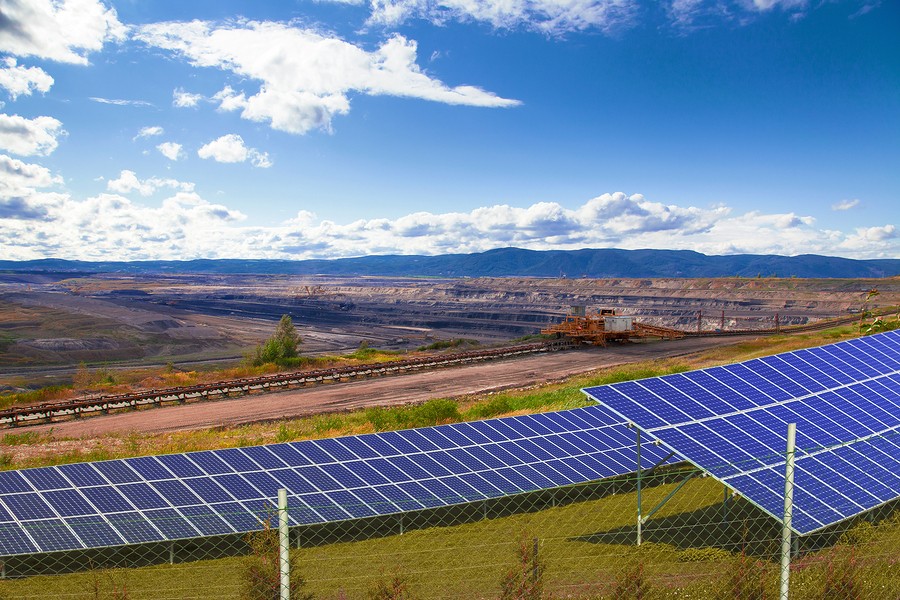Sustainable mining practices are gaining traction in the industry, especially given the potential upsides to business. Copper mining, for instance, has a lot to gain from the clean economy, as electric vehicles require about four times as much copper as an internal combustion engine.
The benefits of adopting sustainable practices extend far beyond just the copper industry, though. In fact, getting friendly with the clean economy can position you as a thought leader by boosting your public reputation, pleasing stakeholders, and giving you a head start on complying with future environmental regulations.
Implementing sustainable mining practices doesn’t have to happen all at once. Start with small steps. In this article, we’ll cover how reducing your water usage, building renewable energy into your strategy, and establishing a responsible mine closure plan can get you one step closer to joining the ranks of sustainable businesses.
Reducing water usage
Mining requires a lot of water between mineral processing, dust suppression, slurry transport, and keeping your employees hydrated. According to the U.S. Geological Survey, 4,000 million gallons per day (Mgal/d) of water was extracted for mining in 2015 in the United States. Even in water-rich geographical areas, that kind of consumption can’t be considered just a drop in the bucket.
Taking a close look at how, where, and the amount of water that’s used at your mining site is becoming increasingly important, especially given the pressure the industry is under to become more sustainable. There’s no one-size-fits-all solution for reducing water usage — some have found success with recycling, desalination, and so on.
Here are a couple examples of how you can reduce your water usage:
- Redesign operational processes, such as blasting or tailing storage strategies, to require less water.
- Understand the value of water — attaching a dollar amount to a seemingly endless commodity is a powerful motivator for change.
- Educate yourself — and your employees — on the importance of water conservation.
At the end of the day, the biggest favor you can do for your mining business is to carefully pay attention to technology and emerging best practices in the field. Keep an open mind when it comes to innovative solutions, but remember that even small steps towards conserving water will have a positive impact in the long run.
Install renewable energy infrastructure
Mining is the third leading energy consumer in the U.S. industrial sector, accounting for 12% of total consumption. And when you break down expenses for mine operations, energy can account for a whopping 20% — 40% of total operational costs.
While it might be unrealistic to reduce energy use, slowly implementing renewable energy will:
- Future-proof your business
- Reduce your carbon footprint
- Combat the volatility of energy prices
- Add some luster to your public-facing operations
You don’t need to go entirely “off the grid” to enjoy the benefits of renewable energy. Starting small can still have a lasting impact. For example, you can begin supplementing your traditional diesel or natural gas generators with renewable sources like solar or wind. These alternative energy sources can provide energy during the daylight hours, saving the fossil fuels for the night shift.
If this all sounds costly, think again. The cost of renewable energy is continuing to fall, in part due to global competition and innovations emerging at a breakneck pace. As such, it’s no longer a pipe dream to begin installing a renewable energy infrastructure to help power mining operations, especially as energy storage (battery) technology continues to advance.
Responsible mine closure plan
Mine decommissioning has an impact on your business, the community, and the environment. So while your operations may not cease for years to come, it’s never too early to start planning for closure. It’s critical that your plan includes strategies designed to lessen the environmental impact of mining operations.
Aiming for a “net-positive” environmental impact in mining areas — or leaving the ecosystem in even better shape than before mining started — is good business. The surrounding community will have a thriving ecosystem to enjoy for generations to come, something guaranteed to generate positive buzz about your company. Not to mention, stakeholders will be happy.
Leaving your mine site unscathed is a daunting thought, but there are some relatively simple things you can do throughout the lifecycle of your operations to get prepped for successful decommissioning.
- Retain soil dug up before mining activities begin
- Slowly reclaim areas that have already been mined
- Hire consultants to conduct environmental impact studies and assist with responsible reclamation activities
None of the above examples should cost you an arm and a leg in the first place and will pay off in the long run.
If you need assistance putting together a responsible mine decommissioning plan, contact us to talk to our environmental health and safety experts.


